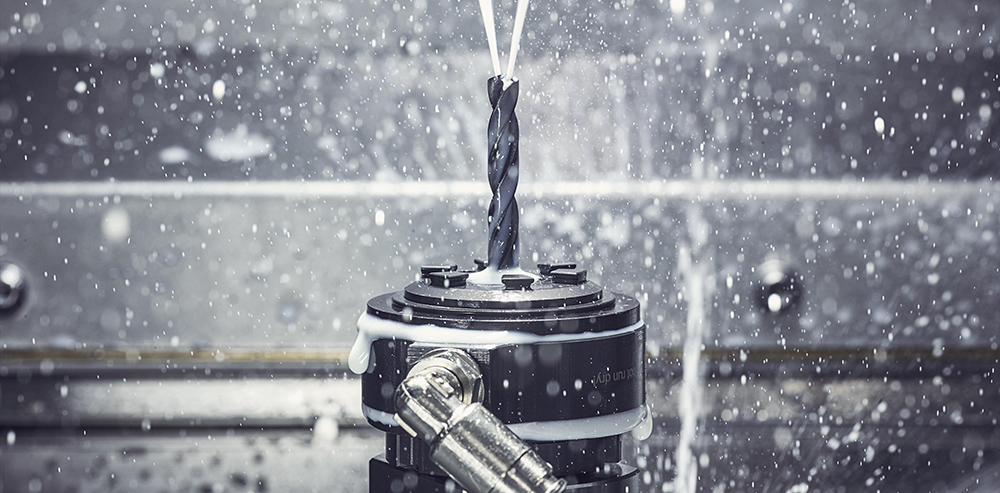Many shops understandably try to recover the expensive acquisition cost of live-tool machines by saving on options that might seem unnecessary at the time of purchase. Through-tool, internal cooling is, in many cases, just such a machine feature shops might forego, settling, instead, for flood cooling.
Most shops would agree that external cooling – where coolant is sprayed at the cutting area through a nozzle positioned three to six inches away from the cutting point – is inherently inefficient. Unless the operator’s aim is excellent, the coolant stream could miss the mark entirely, resulting in poor chip evacuation, high tool temperature and an overheated cutting zone. Even an optimal setup still results in coolant spray and splatter.
For drilling or deep pocket machining applications, flood cooling is particularly inefficient as the stream is not reaching the cutting point at all when the tool enters the workpiece. As a result, additional peck cycles are required to evacuate chips and cool the tool head.
In coolant-through systems, coolant streams through the live tool tip directly at the cutting point, efficiently evacuating chips and cooling the area without additional tech cycles. And that is a much more effective method of machining.
With a non-coolant-through system, shops are probably adding machining cycles to get chips out of the way, and in doing so they lose productivity with that machine. If a programmed cycle is cooling off a cutting tool or evacuating chips, the machine is not making chips, and that’s not the most efficient way to use a machine.
On the downside, coolant-through systems are expensive to buy and maintain. Coolant-through live tool machines cost approximately twice as much as an external flood machine. Not to mention, internal cooling systems come with a hefty annual maintenance bill – somewhere near 20 to 30% of the original purchase price – to open, regrease and inspect seals in the tool head.
Retrofitting with reCool
For about half the price of an original coolant-through unit, however, the reCool system from REGO-FIX converts an external flood coolant machine to an internal cooling system and eliminates the annual maintenance requirement.
What usually happens is that once a shop gets its non-coolant-through machine up and running, they begin questioning whether or not there might have been a better option. That’s where being able to convert their tools to coolant-through by adding something as simple as a reCool unit becomes extremely beneficial.
Suitable for emulsion and oil coolants on live, static and Swiss Automatic machines, the reCool retrofit can be accomplished in a matter of minutes. By simply installing external fluid fittings, coolant hose and a special reCool nut fitted with either a sealing disk or coolant flush disk that directs coolant through or, if desired, on the periphery of the cutting tool the conversion is complete.
Any standard ER collet works with the reCool system, which accommodates sizes from ER 16 through ER 40. The system handles cutting speeds up to 12,000 rpm while delivering coolant pressures up to 2,000 psi.
Once the sealed reCool unit is installed, shops begin reaping the benefits of both schemes: the life and maintenance-free longevity of a non-coolant-through live head and the performance of internal cooling. Tool life is increased, surface finishes are improved, and the overall machining process is streamlined. Non-cutting cycles for chip evacuation and tool cooling are eliminated, thereby reducing work hardening of the workpiece, and setups are made more efficient by removing the necessity for aiming the coolant flow.
For shops looking to convert to coolant-through tooling, reCool is the only way to go because currently there’s nothing else like it on the market. It’s a stand-alone benchmark system and the only option to convert to coolant-through without having to replace the entire live tool head.
For more information about the REGO-FIX reCool retrofit system, visit our web page.

